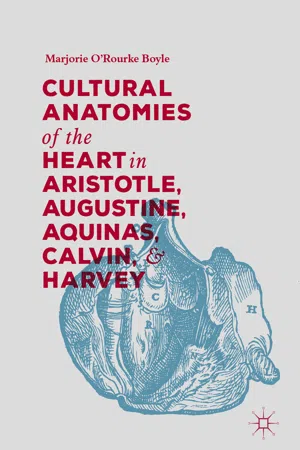“Come in; don’t be afraid; there are gods even here.”
Aristotle, De partibus animalium, citing a fragment from Heraclitus at the oven to visitors1
The heart, Aristotle stated, was a “vessel.”2 Although, from his famous dissections of the chick embryo, he observed the heart in motion “as if it were an animal” and “by nature a sort of animal,”3 he identified the heart with an inanimate artifact. His term “vessel” has been subject to serious criticism. Aristotle’s “fundamental model, the heart-as-a-container, was not physiological.” And, “Aristotle’s main model for the heart is simple and entirely structural: the heart is a container.”4 This study examines his cardiac vessel not systematically in the context of modern science5 but historically in the context of Aristotle’s culture. Greek art, of which pottery was an excellent type, was functional,6 and the function of a pottery vessel was determined by its structure.7 The actual structure and function of a vessel were inseparable. The usage of a vessel afforded Aristotle a heuristic and pedagogical model for the supply—not the storage—of the blood. For Aristotle, as for physicians, that blood supply was a matter of life and death.
Nature and Crafts
A Greek vessel was a common object but a civic pride. The contemporary philosopher Critias lauded Athens for the invention of “the potter’s wheel, and the child of earth and oven, most glorious pottery, useful household ware.”8 The praise was a fragment and its claim was untrue,9 although Attic pottery was indeed useful and sometimes glorious. Yet, from Greek antiquity no potter’s wheel has survived intact, and even its depictions on the vessels it formed are few.10 From the study of excavations of badly damaged pieces and again from scarce depictions, the Greek kiln has only recently been recreated and fired successfully in a modern backyard in Tampa, Florida.11 And, although pottery survived better than any other ancient artifact, and the types of Greek vessels in modern classifications are numerous, an estimated less than one percent of their ancient production is extant, mostly as shards.12 Fewer than half of Aristotle’s own works on their earliest list are extant.13 Those survived the vagaries of human transport and deposit14 and the ravages of the very nature that incited his research. For the history of the heart, especially valuable were the lost anatomical drawings.15 Those artisanal renderings would have intended to copy nature’s design in the generation of animals. For Aristotle believed that “in the early stages the parts are all traced out in outline; later on they get their various colours and softnesses and hardnesses, for all the world as if a painter were at work on them, the painter being Nature.” He cited the common observation that painters “first of all sketch in the figure of the animal in outline, and after that go on to apply the colours.”16 His personal preference was for black-and-white line drawings for design rather than colored pictures for character.17 The starting point for Nature’s design of blooded animals, the noblest of its productions, was precisely a point, the drop of blood Aristotle observed in a chick’s embryo at three days.18 That evidence survives in a text but not an illustration. The remnants of Aristotle’s ancient culture invite research behind the scenes to find and to understand better his cardiac vessel. For, an alternative to the regret that Aristotle was ignorant or inexperienced about cardiac physiology is the premise of this study that he did not explain certain facts because their usage was so ordinary and obvious to his contemporaries that they needed no explanation. A vessel was such a fact. As an introduction to the subject states: “In ancient Greece vases were commonplace. No one needed to be told what they were used for or what their pictures meant; pottery was just part of everyday life. Ceramic vases served as containers, either for utilitarian purposes in the home or for religious rituals. Some were decorated with figures and patterns, others were plain and painted black all over; unpainted coarse ware sufficed for cooking.”19
Aristotle’s master in philosophy, Plato, categorized a “vessel” or “container” (angeion) as the prime product of the human skills that contributed to the civic good. A vessel was the class of things made with tools “for the sake of preserving what craftsmen have produced.” Plato identified “this varied kind of thing which is worked for things liquid and solid, and for things that are prepared on the fire and things that are not, and which we refer to with the single name of ‘vessel’—a common kind of thing.”20 A vessel provided Aristotle an analogy for the heart from what man made by art to what was made in man by nature. His deliberations referred from nature to industry so as to compare animal heart to human artifact, the vessel. The comparison was not an equivalence. Animals and their organs existed by nature. As Aristotle defined their nature, they “have within themselves a principle of movement (or change) and rest—in some cases local only, in others quantitative, as in growth or shrinkage, and in others again qualitative, in the way of modification.” In contrast an artifact possessed no such internal inclination toward change. Yet, by its composition of stone or earth, or a mixture of those, it incidentally possessed the principles of change inherent primarily in its materials as natural substances. Aristotle’s example of incidental possession was the physician healing himself. “If a man were a physician and prescribed successfully for himself, the patient would cure himself; but it would not be qua patient that he possessed the healing...
